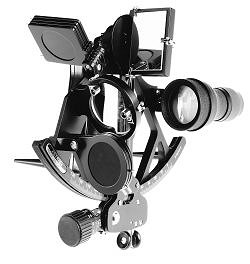
To make the instrument smaller, the octant was invented, being just one-eighth of a circle. It could measure up to a 45° angle. Tycho Brahe (1546-1601) designed a version with an arc of 60° or one-sixth of a circle and appropriately named the instrument a sextant.
In 1666 Robert Hooke (1635-1703) suggested that reflecting the image of a celestial body would give twice the coverage. This idea was taken up by Astronomer Royal Sir Edmund Halley (1656-1742) in 1692 with a single instrument. Caleb Smith in 1734 created a "sea quadrant" with a single mirror, and a few instruments were made.
Meanwhile Isaac Newton (1642-1727) had presented the idea for a doubly reflecting instrument to the Royal Society in 1699, but the idea was ignored. It remained for another Englishman named John Hadley (1682-1744) in 1731 to combine the octant with Isaac Newton's idea of using double-reflecting mirrors, which gave Hadley's octant the ability to measure a full 90°. In the same year the American Thomas Godfrey designed a quadrant with double-reflecting mirrors that could measure 180°.
In 1757 Captain John Campbell (1720-1790) arranged through the Astronomer Royal of the day, James Bradley (1693-1762) to have the famous instrument maker John Bird (1709-1776) construct a Hadley quadrant with double-reflecting mirrors. The modern sextant was born.
Sextants have a 60° arc and double-reflecting mirrors to give a measuring range of up to 120°. Verniers and micrometer drums allow sextants to measure angles as fine as 12" of arc today.
Here is the most popular all-metal sextant made today, a sextant made in China called the Astra IIIb:

Here is an octant made around 1840 by G. W. Blunt, who incidentally published most of the early editions of The American Practical Navigator written by Nathaniel Bowditch. This octant uses brass for the arm, ivory for the inlay, and ebony for the frame.
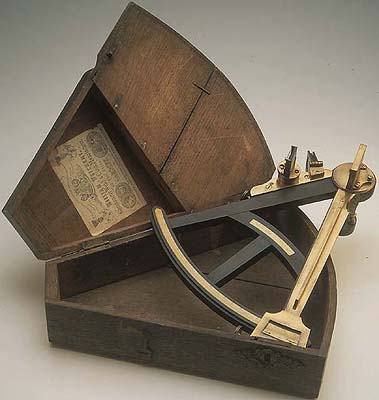
My workhorse sextant is this Tamaya Jupiter sextant made in Japan; mine was made in 1982:
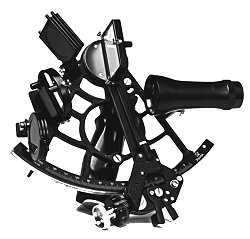
The most accurate sextant that I own is a C. Plath Navistar Professional which I bought new in 1999. It was made in Germany and has a fabulous feel to it, as it is made of cold extrustion seawater resistant aluminum alloy along with Hastadur, a glass-reinforced material which also reduces weight. It is guaranteed accurate to better than 12 seconds of arc.
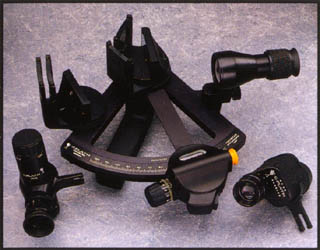
C. Plath of Germany made a prototype of a sextant with a built-in calculator. It seems to me that today one could have a attitude sensor to detect how level the sextant is, another sensor to measure the angle of a body, a built-in twin quartz clock with high accuracy, and then with the press of a single buttom a fix could be processed by a built-in computer without relying upon any external signals from satellites or radios. The whole thing could run off of 2 AA batteries, the way a Garmin GPS does, or better yet, solar power!
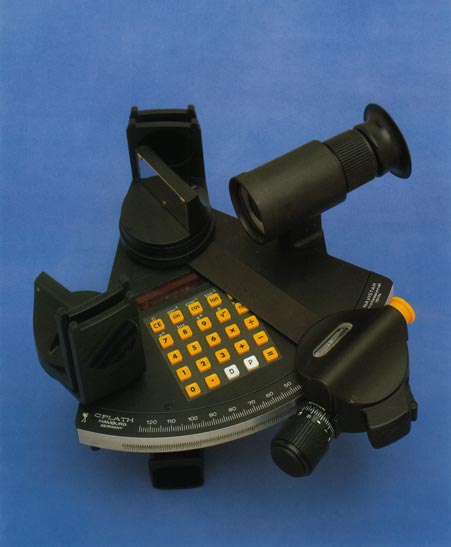
One of my real favorites is this small 3 inch diameter pocket sextant, a Francis Barker & Son Small Craft Precision Sextant from England. This one is the last one ever sold new. It was probably made in 1988, although I did not buy it until 1997!
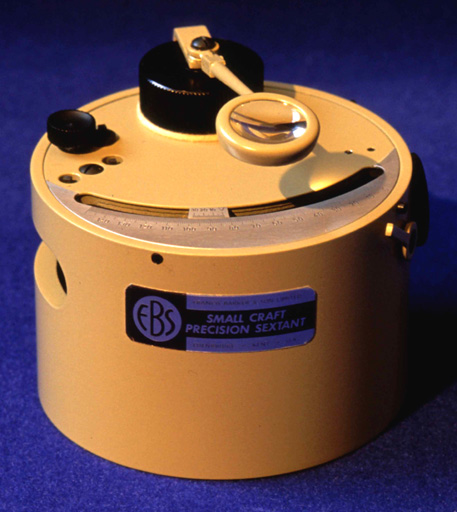
Another circular compact favorite is my Picket Circular Slide Rule. I got this for my birthday about 1970 and I've never seen another! It is a real gem, just slightly over 3 inches in diameter:
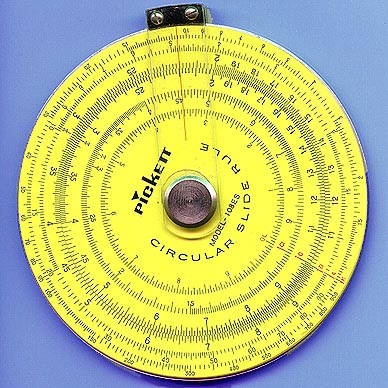
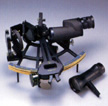
Created: 29 Dec 1998 Modified: 3 Nov 2002